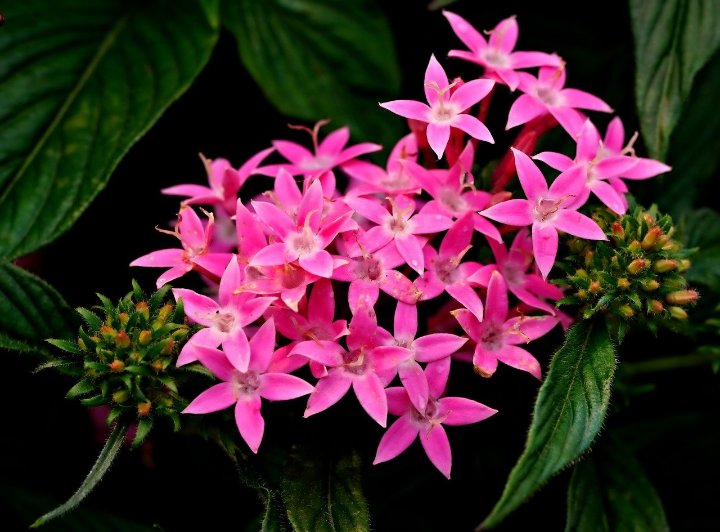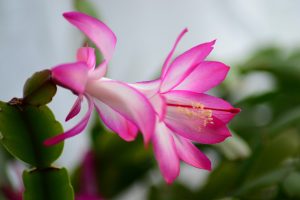Pentas, with their clusters of star-shaped flowers and vibrant colors, are a delightful addition to any garden or landscape. These versatile plants are loved by both gardeners and pollinators for their long-lasting blooms and easy-care nature. Whether you’re looking to attract butterflies and hummingbirds or add a splash of color to your garden, Pentas are an excellent choice. With the right growing conditions and care, you can enjoy a beautiful display of Pentas flowers in your outdoor space.
Best FLOWER Varieties
| Image | Name | Rating | Shop |
|---|---|---|---|
 | Pentas Lucky Star |  | |
 | Pentas Seeds – Glitterati Purple Star |  |
Pentas Hardiness Zones
Pentas thrive in warm climates and are best suited for USDA hardiness zones 10-11. These zones provide the ideal conditions for Pentas to grow and bloom abundantly throughout the year. If you live in a region with cooler temperatures, you can still grow Pentas as annuals or container plants and enjoy their beautiful flowers during the warmer months.
How Much Sun Do Pentas Need
Pentas are sun-loving plants and thrive in full sun exposure. Plant them in a location where they can receive at least six hours of direct sunlight per day to ensure optimal growth and flowering. In hot climates, Pentas may benefit from some afternoon shade to protect them from intense midday sun and prevent leaf scorch. However, they generally perform best when grown in full sun conditions.
Pentas Soil Requirements
When it comes to soil, Pentas prefer moist, well-drained soil that is rich in organic matter. Ensure the soil has good drainage to prevent waterlogging, as Pentas are susceptible to root rot in soggy conditions. A loamy or sandy soil texture is ideal for Pentas, providing the right balance of moisture retention and drainage. Additionally, Pentas thrive in slightly acidic to neutral soil with a pH range of around 6.0 to 7.0.
Pentas Plant Spacing
When planting Pentas, space them approximately 1 to 3 feet apart, depending on the variety and mature size of the plants. This spacing allows for proper air circulation and prevents overcrowding, ensuring that each plant has enough room to grow and spread. Pentas plants can also be grown in containers or hanging baskets, where they can be spaced closer together for a lush, full display of flowers.
Pentas Temperature Requirements
Pentas are heat-loving plants and thrive in warm temperatures. They prefer daytime temperatures ranging from 70°F to 85°F (21°C to 29°C) and can tolerate higher temperatures with adequate moisture. Plant Pentas in spring after the danger of frost has passed, or in early summer to give them time to establish before the heat of summer. In cooler climates, Pentas can be grown as annuals or brought indoors during the winter months.
Pentas Fertilizer Requirements
To promote healthy growth and abundant flowering, Pentas benefit from regular fertilization with a balanced fertilizer. Apply a slow-release or liquid fertilizer once a month during the growing season, following the manufacturer’s instructions for application rates. Avoid over-fertilizing Pentas, as excessive nutrients can lead to lush foliage at the expense of flowers. Additionally, amending the soil with compost or organic matter before planting can provide essential nutrients and improve soil fertility.
Pentas Water Requirements
Pentas require regular watering to thrive, especially during periods of hot, dry weather. Water them deeply and thoroughly, ensuring that the soil is evenly moist but not waterlogged. Allow the top inch of soil to dry out between waterings to prevent overwatering and root rot. Mulching around the base of the plants can help retain soil moisture and suppress weeds, promoting healthy growth and flowering.
Pentas Humidity Requirements
Pentas prefer moderate humidity levels and can tolerate a wide range of humidity conditions. They are well-suited to gardens in coastal regions and areas with high humidity levels. However, they can also thrive in drier climates once established. Ensure proper air circulation around the plants to prevent moisture buildup, which can lead to fungal diseases such as powdery mildew.
Pentas Pests and Diseases
While Pentas are relatively pest and disease-resistant, they may occasionally encounter issues with pests such as spider mites and aphids. Monitor your plants regularly for signs of pest infestations and take appropriate measures to control them, such as spraying with insecticidal soap or using natural predators. Additionally, Pentas may be susceptible to fungal diseases such as powdery mildew, especially in humid conditions. Ensure proper air circulation and avoid overhead watering to minimize the risk of disease.
In conclusion, growing and caring for Pentas is a rewarding experience that allows gardeners to enjoy the beauty and vibrancy of these charming flowers. By providing the right growing conditions, including full sun, well-drained soil, and regular watering and fertilization, you can cultivate healthy and vibrant Pentas plants that enhance the beauty of your garden. With their long-lasting blooms and attractive foliage, Pentas are sure to become a favorite in your outdoor space.














